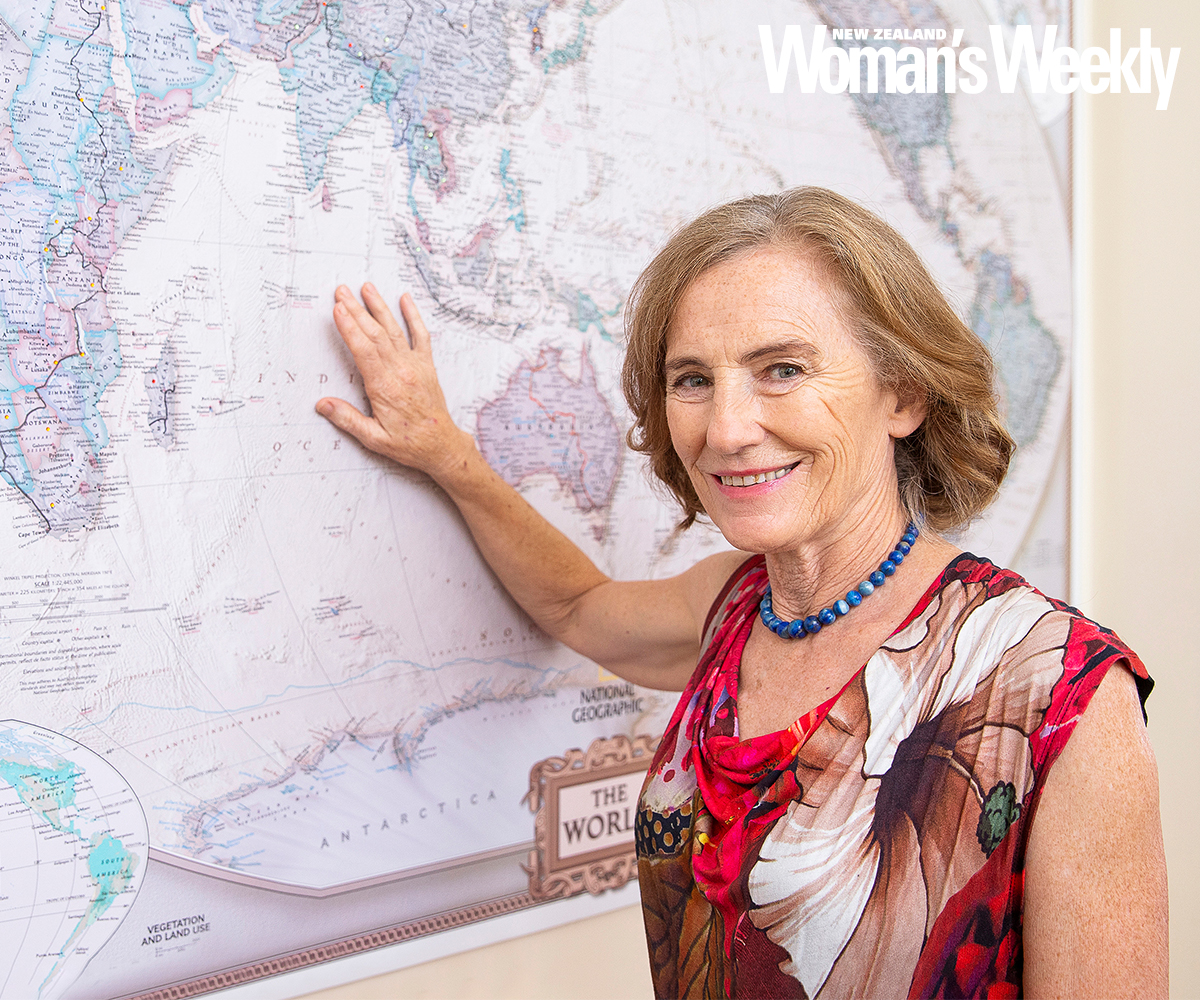There are two maps pinned up on a wall in Jo Morgan’s expansive lounge.
One – a large map of the world − shows, in heavy, black felt tip, the places she and husband Gareth have visited on their now annual motorbike adventures. The other, smaller and more detailed, highlights a section of the Southern Alps.
To the uninitiated, the image is one of inhospitable snow-capped peaks, deep bleak valleys and Lord of the Rings terrain.
Jo points to one of the jewel-like markers glinting in the late afternoon light that’s filtering through the picture windows of the Morgans’ Oriental Bay, Wellington home.
“There,” she says, “that’s where we were.”
Mt Hicks was the 22nd of 24 peaks Jo had promised herself she’d climb by the time she got her Gold Card.
On October 31, the grandmother of seven almost died, her lower body buried metres deep in an avalanche that claimed the lives of guides Wolfgang Maier (58) – Jo’s “other half” who had been with her on all of her previous climbs – and Martin Hess (50).

Jo with the friends she lost on the climb, Wolfgang Maier and Martin Hess
It’s also there that Jo, in shocked silence and with the growing realisation there was nothing she could do for her two companions, found herself reaching for her phone to take a photograph of the sunrise.
“It seems bizarre now,” she recalls. “There was no response to my shouts to the guys, and there was a despair realising I was trapped and couldn’t help locate them. But then there was this glorious sunrise that seemed to give me a sense of peace. My phone was around my neck, so I got it out and took a photo.”
Jo’s is a remarkable tale of survival and, as she says, incredible luck. It’s also the tale of a woman determined to live life to the full.
The trio had set off from Martin’s Hut in Moa Creek at 3am on October 27, scrambling across rocks as they traversed Hooker Lake. They climbed for 11 hours. It was a difficult and slow slog. Jo was carrying 18kg.
The weather was “gnarly”, sleety. At 3pm they stopped for a meal before continuing their climb. Two hours into what Jo describes as one of the area’s toughest climbs, they decided to call it a day. Finding a sheltered hollow, they settled in for the night.
They were up early, forgoing breakfast but sharing some chocolate. It would be a five-hour “trudge” up the Earl Ridge to Empress Hut, the highest and most inaccessible hut in the Aoraki/Mt Cook area.
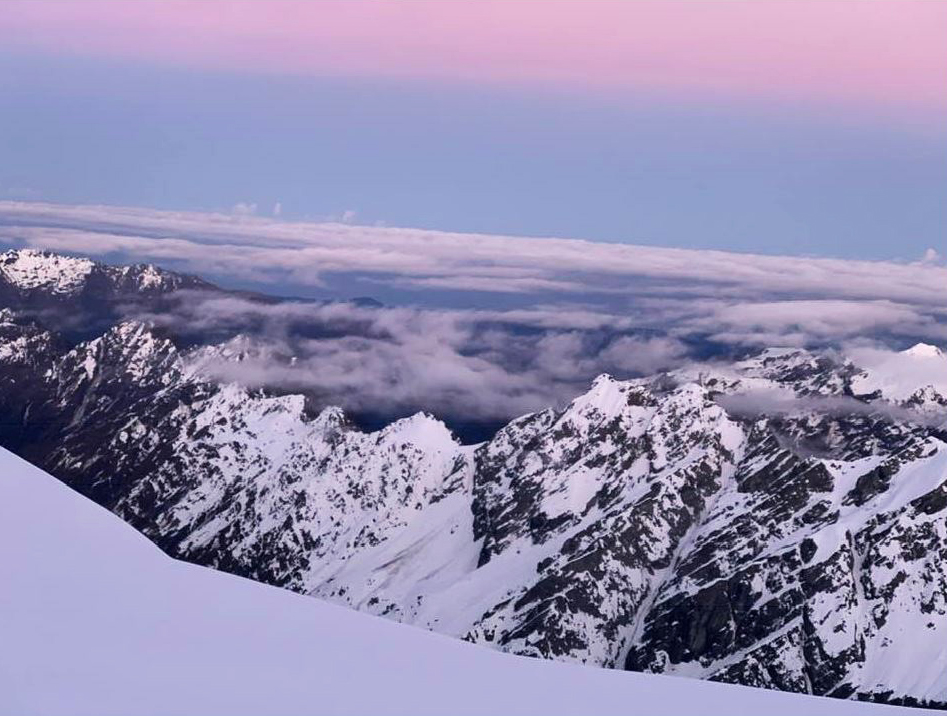
The sunrise Jo photographed while trapped under snow.
A Facebook post from Jo on October 28 notes it’s a rest day. She wishes she’d done more training – reading, gardening, tree pruning and runs up Wellington’s Mt Victoria.
A second Facebook post, two days later, was, as it turned out, astonishing in its prescience, noting, “It has been bleak up here… but a 20-hour weather window has us planning to leave at 2am. Hopefully Mt Hicks feels like visitors.”
It was an area Jo knew well, having climbed there four times in the previous three years during several attempts to reach Mount Dampier and La Perouse, when the 65-year-old tumbled into a crevice, dangling, she says “like a chandelier in a big blue room”.
“It’s a dangerous walk-in now. It’s become more dangerous each time I’ve done it,” tells Jo. “But we got the break in the weather. We went for it.”
The trio had discussed pulling out on the climb. Usually they would have gone out the day before to plan their path. This time they didn’t. There was a moderate avalanche risk.
“It was getting up there, but it wasn’t don’t go, it was go with caution.”
Roped together, with Wolfgang in the lead and Jo behind Martin, the friends set off. They walked for several hours, head torches lighting the way, stopping for a breather before tackling the haul up to the saddle above Hooker Glacier.
Jo passed her water bottle round and messaged Gareth back at home in Wellington, telling him everything was okay.
“And Wolfgang suggested I have a pee – he knew there wasn’t going to be another chance for a while.”
Zig-zagging up the slope, they were almost at the top when she heard Wolfgang shouting.
“It was something like, ‘hurry the f*** up Jo’. I had my head down, I looked up and then the ground started vibrating,” she pauses, the memories still raw.
“There was this huge wave coming towards me, like a big surf wave, and then I was just flailing around trying to create an air pocket. I don’t think it’s appropriate to say I did the right thing or anything like that because I don’t think you have much choice − you do what you do.”
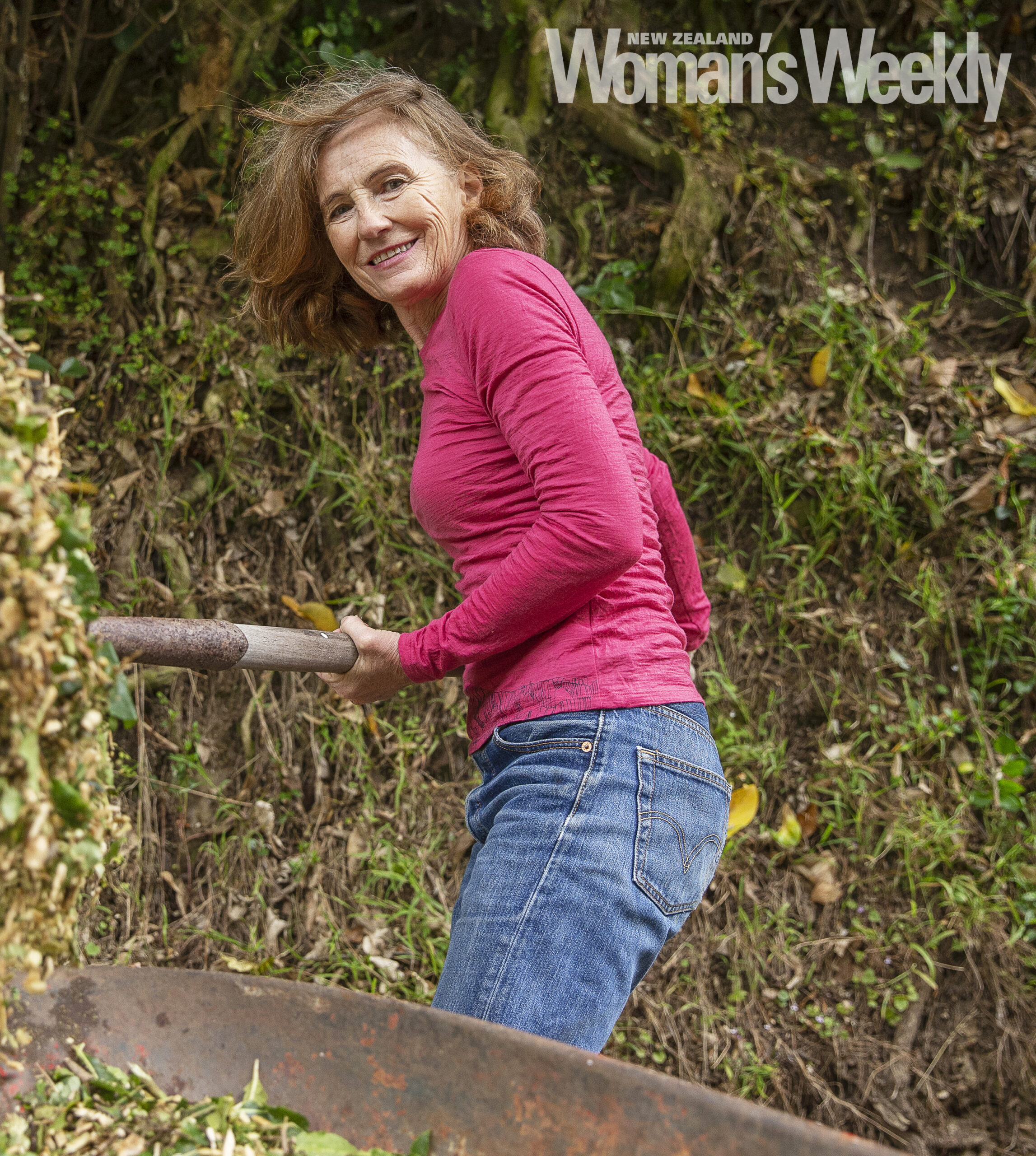
She doesn’t know if she was in shock or whether she panicked.
“It was such a quiet process, I don’t remember any noise. Initially I sat there and thought, ‘This is awful’, and just wanted to cry − then I thought, ‘This is ridiculous, get your act together, woman!'”
Incredibly, nothing was broken and Jo was able to activate her personal locator beacon before she set about digging herself out.
“Having the beacon somewhere I could reach it was probably the most important thing. Even if I had been injured and hadn’t been able to do anything else, setting that off would have been enough.”
Clearing the snow away so she could pull herself out, her phone rang. It was the rescue coordination centre, asking who and where she was. She then rang Gareth.
“I just said, ‘Look, I’m up here, I’m fine, I’ve lost my climbing mates and I don’t know where they are.’ It was a short, sweet conversation and then he called the kids to tell them what had happened.”
Fearful that the weather might pack up, and with no food and no rope, Jo realised she had only enough gear to survive another couple of nights on the unforgiving Mt Hicks. The sound of the helicopter was music to her ears.
Choppered down to Mt Cook village, a shaken Jo was offered a breakfast of bacon and eggs, cooked by the alpine club’s caretaker.
“I ate it with gusto, it was so good. I didn’t have the heart to tell him I’m vegetarian.”
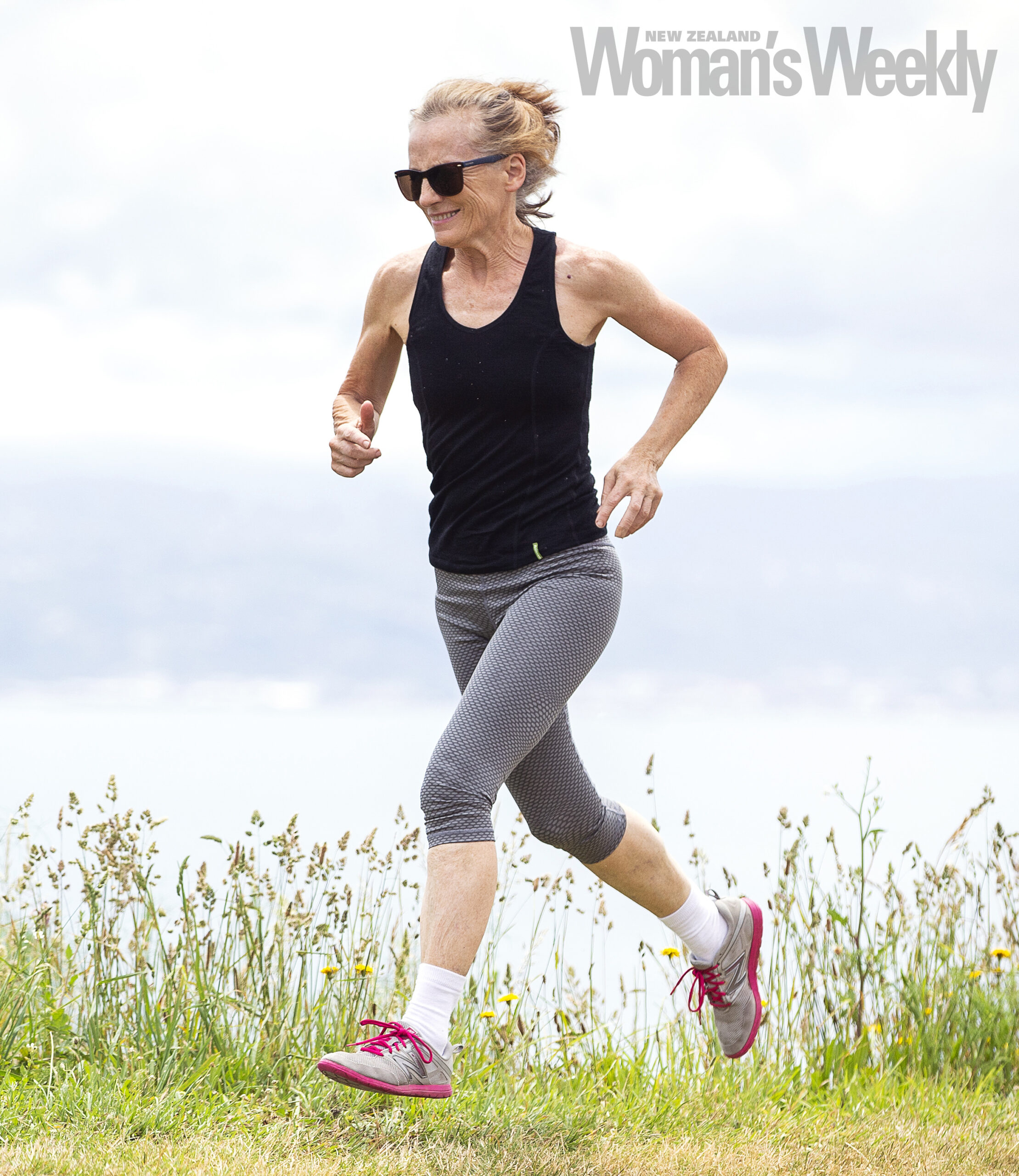
As Gareth and son Sam waited in Christchurch for news of her rescue, Jo stayed in the village to see Wolfgang and Martin one last time.
“It wasn’t to say goodbye – it was about trying to understand,” she explains, adding that she still wonders if there was something more she could have done.
“But I was probably only two or three inches away from being number three. It’s a bit like putting three jellybeans in a jar with some icing sugar and shaking it. All three of us could still be up there.”
Jo, who returned after a three-month motorbike trip from Morocco through Georgia to attempt Mt Hicks, has been climbing for less than 10 years. She took it up at 58, after Gareth was invited – and went – to Antarctica without her.
“I just thought, ‘Okay, what can I do?’, so I booked on a learn-to-climb course and that was me! I just love it, even though I’ve been so cold I should have been really miserable. You open a little hole in your bivy bag and peer out and you’ve got snowflakes coming down on your nose, and you can see the stars and moon and silhouettes of the mountain. I just think I’m the luckiest granny in the world.”
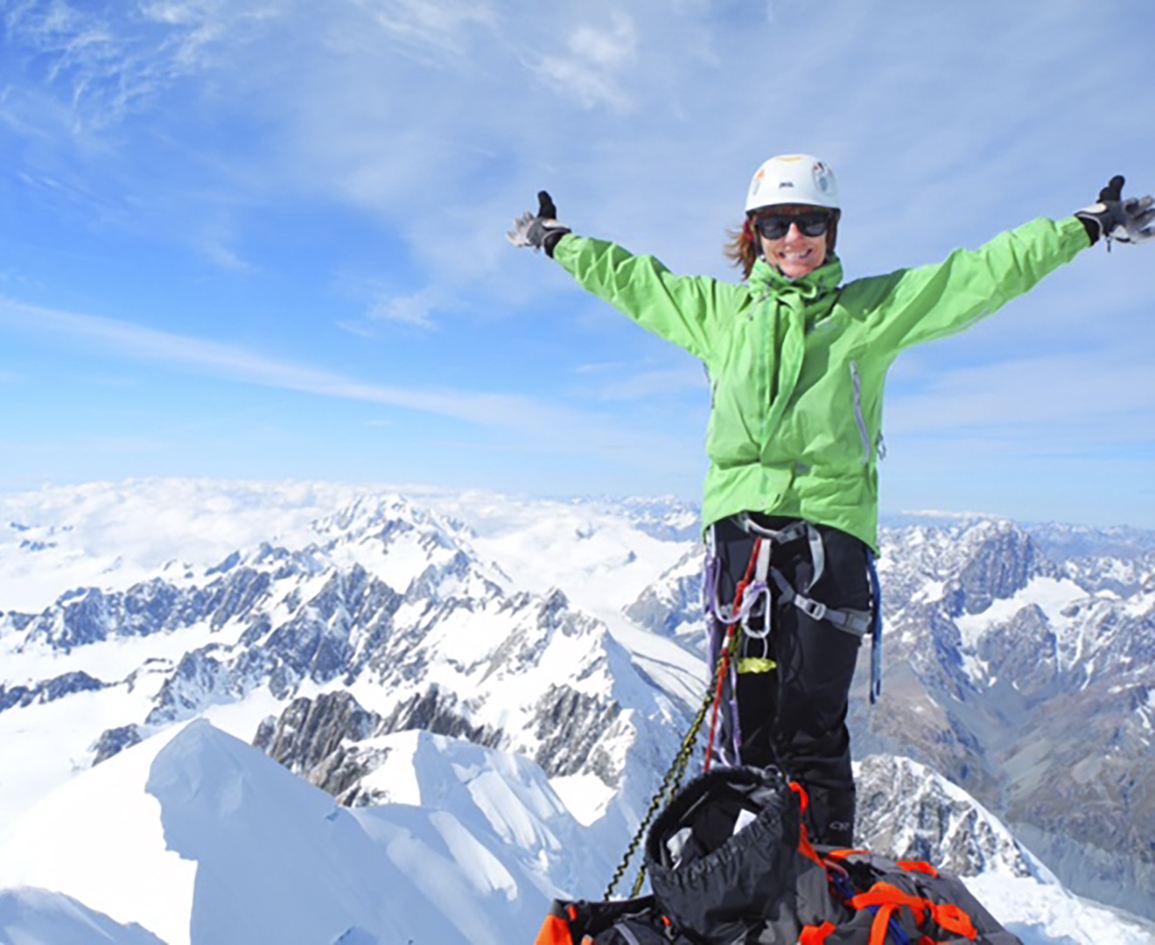
Jo on the summit of Mt Tasman.
And while her avalanche experience has certainly given Jo pause to think – “Something like this throws so many lives into tragedy [and] it has had a big impact on my family and many friends; they had that time not knowing whether I was alive” – it hasn’t dampened her adventurous spirit.
“A motorbike is probably higher risk in many ways. I just think life is about experiencing things and if you’re physically able to push it, then why not?
“The day after I got home, I was hanging off a tree with a saw thinking how the family would be laughing if I fell out and down the bank. How ironic – the woman who fell off a mountain is lying at the bottom of a tree!”
Christmas celebrations this year involved a family gathering at the beach, with the grandkids being gifted climbing wall vouchers.
In January, Jo will take part in a climb to Caroline Hut in memory of Wolfgang and Martin. She and Gareth will then head to Europe, picking up the bikes where they left off.
